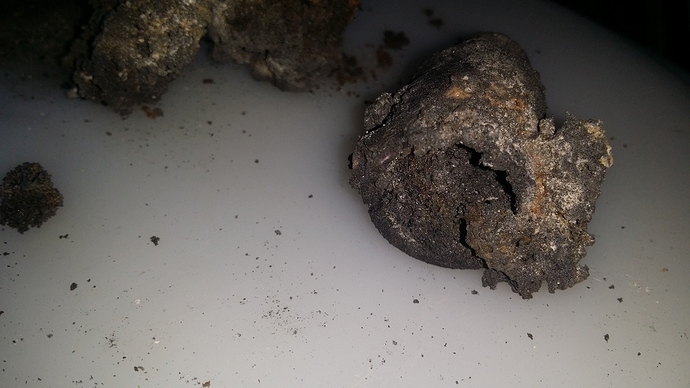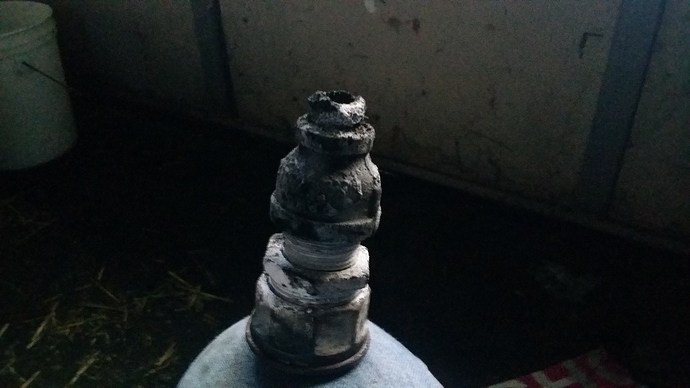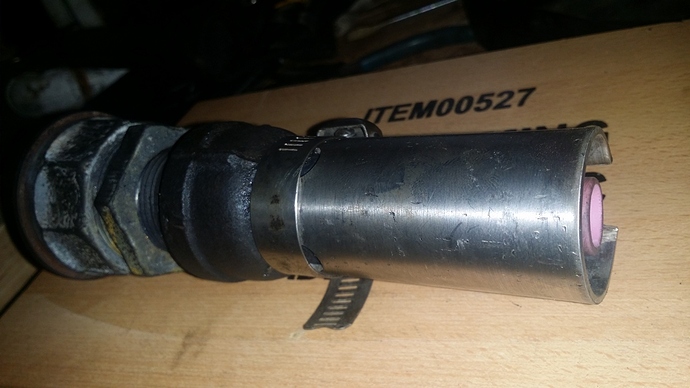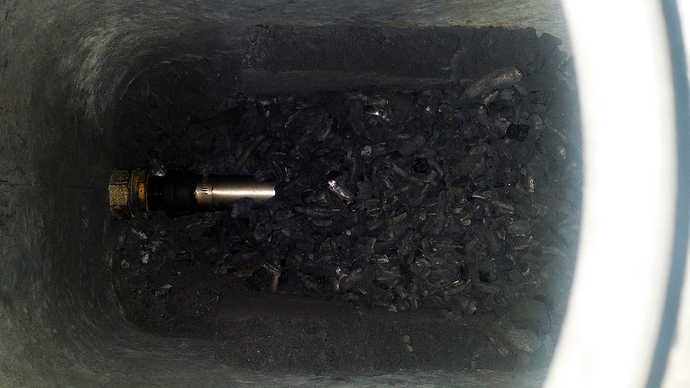Hi Marcin, I have been thinking a lot about a continuous small scale charcoal producer that can capture the heat. The best idea I can see at this time is a basic WK wood gasifier. Wood enters the top, gets reduced by fire at the air nozzles and produces clean wood gas as it desends the hot fire tube. This design will need a grinder where the grate is located to crush and remove the charcoal from the tube. This charcoal then falls into a hopper and carried away. The wood gas created in the process can be used to run a stationary engine or fire a boiler. I suppose you could wrap a water coil around the fire tube, but this heat may be necessary to completly char the wood. The water coil could cool it too much. Maybe.
Another idea is to have a fema syle gasifier that is open to the air. Wood is dropped into the fire tube as fast as the charcoal is removed from the bottom. I have made a version of this, but got side tracked on other projects before giving it a test. Still sitting on my shop floor two years later!!! I really need to quit getting so many ideas or else retire and have more time.
Later, Gary in PA
Hi Gary, do you have any pics you could post or send? I ask because I’m torn between that FEMA type for heat and charcoal production or one I say in Doug brethower’s book; fire up tip coal sink and cool, augered out from the bottom…
Thanks, David
I wonder if an ice maker auger and crusher would work for charcoal?
Don, I think Gary ran his for several hours and I had trouble with the gas flow when I took it apart I found the brass nipple almost melted and the nozzle had what looked like slag on it my reducer was also starting to burn up Gary told me that he thought the brass nipple could not take the heat that is why I thought maybe wrapping the brass and nozzle in stainless or using some fire clay to protect it .The threads on the black iron fittings and the nozzle are diffrent one is pipe thread and the machine thread I think .We ran the exhaust back into the the tank.I have diffrent size nozzles but they will need to be reduced to be used the experiment is to see if diffrent nozzles would give a better gas flow and would they last longer than black iron wrapped in stainless
Hi Marcin, I’m curious how the workshop turned out. Care to share some highlights?
Best regards, David Baillie
Danny,
Keep in mind that silica based refractory cement has a catalytic effect that promotes catastrophic oxidation of metal. So make sure that the metal is coated enough to keep the air, heat and catalyst combination from eating up your metal nozzles.
Bruce
Well Mr.Dan, I had a little time this afternoon so I removed the nozzle to take a look at it and it was gone! - along with a inch or so of the black pipe nipple it was attached to. I’m not sure if the black pipe burned off and the ceramic is laying down in the ash or if the ceramic melted to nothing because I didn’t empty the charcoal to remove the nozzle. I have been noticing longer startup times and harder starting. I guess I will try the sacrificial stainless nipples and see how that goes.
After attending Arkansas last fall and seeing what happened with Al Denninger’s stainless steel nozzle with larger charcoal, I’m wondering if you used the same set up but made smaller feedstock if that would stay intact? After reading about the Kalle system, he stated the smaller the better.
Also I forgot, are you feeding some exhaust back into the air inlet?
What happened to Al’s stainless nozzle? What size charcoal did he use?
Yes I add exhaust to temper the flame.
He used some charcoal that was slightly larger and melted his stainless nozzle into a puddle
Thanks Bill for convincing me on the phone today to vacuum out the charcoal to make sure the ceramic nozzle did actually burn up. Well it did not burn up because I found it. It was buggered up with clinkers and it had a crack in the side. What I think happened is that the black iron pipe nipple, that I ground the threads to allow the cup to slip on and turn enough so I couldn’t pull it off, expanded more than the tig cup causing it to crack and fall partially off when I poked in there with a wire and then filled with ash and clinkers. Then the black pipe nipple became the nozzle but couldn’t take the heat and melted.
Does this make any sense?
Interesting. I was glad to see you call. I know nothing about charcoal gasifiers but keep my eyes and ears open on others projects because I want to make one.
Sooooo… Would you conclude that ceramic and metal are not conducive together in a charcoal gasifiers? Or just not so close to the heat? What I mean is maybe if the ceramic was longer, it may have been okay?
I recall that @AlDenninger had a piece of rolled stainless steel slid over his inlet pipe.
I think you got it right Bill. I am going to try cutting slits in the end of the pipe to allow for expansion and make the cup a loose fit and then cover it with rolled stainless and fine ashes and see what happens.
Hey Don ,
Looks a little like what I had after my run at Argos I think I will try the same set up of 1.25"black iron pipe with a reducer down to 1" a brass nipple to screw the tig cup on only this time I will slide a tube of stainless over brass and the tig cup .My son scraps a lot so I have him save me all the handles off the BBQ grills they seem to work out perfect cut a piece off then cut a X on one end use a band clamp to hold on.it what I use when I just use the black iron pipe maybe this will help. Dan
Dan, am I hearing this right that you are using a 1 inch nozzle? I tried that after I had this apart and it took a long time to start making gas. After it finally got to making good gas (sustain a flare) the engine ran fine. It seems like we need a smaller nozzle with high velocity for quick starts and then the engine also seems to run just fine with the smaller nozzle. I am thinking about packing ash between the 1/2" nipple and the stainless sleeve for added insulation.
Here is what I made up tonight
1/2" short nipple turned down to fit inside diameter of cup and then slotted for expansion protection.
Assembled nozzle with stainless sleeve around.
Nozzle assembly installed in place.
That actually -looks- really good. I hope it holds up. I would guess the expansion is the problem. it is pretty hard to get the expansion right between metal and ceramic.
I am wondering if you could hold the ceramic on with a spring attached to keep a butterfly valve open, then when it breaks off it closes the butterfly valve. then that saves the iron… but probably not worth it.
Don,
I have a #10 and a #12 left they both seem to have a 3/4" hole that I reduce down, my fire tube starts out with a 1" ball valve attached to a 3" threaded black iron pipe attached to a 1"x 1.25 " bell reducer attached to a 1.25" threaded black iron pipe then I drill a 1.25" hole through a 2" black iron cap run the 1.25" threaded pipe through the cap on the inside of cap screw on another 1.25"x 1" bell reducer you will need to drill a 2" hole in your tank take a 2"x 4" black iron nipple cut in half weld on to tank then take the 2" cap screw it on the tank then weld the 1.25 " black iron pipe through the cap make sure to leave enough pipe thread to attach 1.25 " X 1" bell reducer that way I can use any thing from 1.25" on down .
I was wondering what if you ran your black iron pipe to the center of your container that way it should have more draw and a better heat zone plus more gas. Will try to send pics of fire tube .Dan
I really like the shield over the ceramic. I suppose depending on how fast the incoming air is, the shield could actually extend well past the ceramic? Say if the rpms remained constant? Or maybe even a ceramic shield?
Dan, how long after you start your system are you making good enough gas to run an engine?





